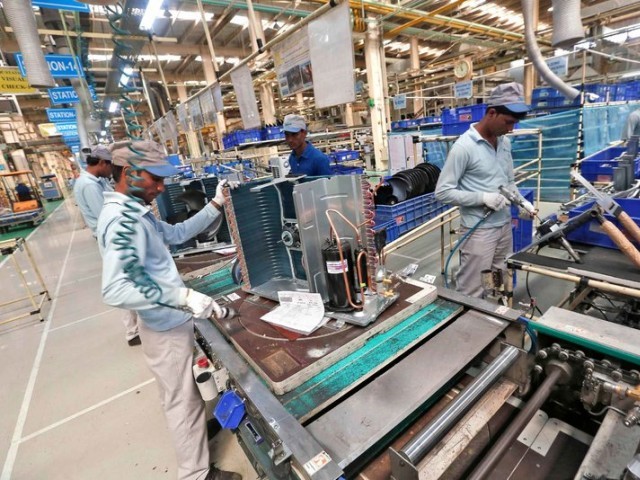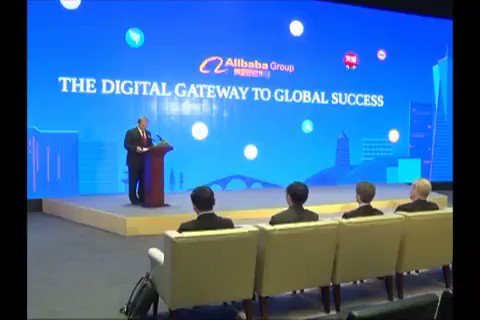
Silicon Valley take note: in everything from mobile payment systems to news apps, businesses across Southeast Asia look to a new horizon for inspiration – China
Ian Chua took his first step to establishing a multimillion dollar business by watching a YouTube video.
Back in 2012, Chua was browsing the web when he came across a television interview featuring the Chinese entrepreneur Chen Ou. Chen, the founder of Beijing-based Jumei, talked about how he had built one of China’s biggest online cosmetics store by leveraging shoppers’ collective bargaining power.
Chua, a young Malaysian student fresh out of college, listened carefully and an idea emerged.
“I was thinking to myself: ‘I want to do this in Malaysia,’” Chua recalls.
Fast forward four years and Chua’s company, Johor Bahru-based Hermo, is one of the most successful beauty e-commerce websites in Malaysia.
The company’s sales revenues reached US$10 million last year, up from US$100,000 in 2012. And Chua, still just 27, has landed a place on Forbes Asia’s “30 under 30” list – a celebration of the region’s brightest young entrepreneurs.
“I was very lucky, I bumped into the idea,” Chua says, referring to Chen’s YouTube video. “For me, it was an inspiring moment.”
But Chua’s good fortune is not only about luck – it’s a reflection of a growing trend in which businesses across Southeast Asia look to China for inspiration for everything from e-commerce to mobile payment systems and news apps.
Once derided as a copycat of Western giants, Chinese companies have grown in stature to the point that in many areas they are now seen as the pinnacle of business innovation.
Even Silicon Valley veterans are taking note.
Connie Chan, a partner at US venture capital firm Andreessen Horowitz – whose investments include Airbnb and Facebook, told a conference this year that her fund’s portfolio company LimeBike, based in California, had taken inspiration from a dockless bike-sharing scheme from China.
LimeBike’s smartphone-activated bicycles, which riders can drop off anywhere they want rather than having to find a docking station, were first rolled out by Beijing-based Ofo and Beijing Mobike Technology, Chan said.
And the nearer you get to the Middle Kingdom, the more Chinese business models are being replicated.
Kay Mok Ku, a partner at Asia-focused investment firm Gobi Partners, said one of four Southeast Asia start-ups his firm had invested in had been modelled on Chinese companies.
And the influence of Chinese businesses now stretches far beyond the world of start-ups.
Last month, Thailand’s central bank introduced a standardised QR code that enables the country’s smartphone users to pay for their purchases simply by scanning their devices – taking a page from the playbook of Chinese tech giants such as Alibaba and Tencent whose scan-and-pay mobile apps supported transactions worth nearly US$3 trillion in 2016 alone. The Singapore government has announced a similar plan.
Ku said the rush towards Chinese business models reminded him of how American firms had emerged as a global standard when their massive success on US soil attracted companies across the world to copy their ideas.
“The success of Chinese businesses shows that you can become an international player just by leveraging the Chinese market,” Ku said.
SIMILARITY WINS
For entrepreneurs in Southeast Asia, there are many benefits to learning from China. Eric Cheng, the founder of Malaysia’s online second-hand car trading platform Carsome, knows this well, as he has turned his little known start-up into a multinational business using a Chinese model.
After studying several car trading websites across Europe, Asia and America in 2015, Cheng chose Chezhibao, a Nanjing-based Chinese start-up, as his role model.
“There is a similarity between China and Southeast Asia in terms of user behaviour, making it easier for us to replicate the business model of Chinese companies than Western ones,” Cheng explained. For instance, Carsome has learned from its Chinese counterpart how to build trust among owners and dealers by introducing a transparent virtual auction process; such a practice does not exist in the West where dealers do not attract the same level of distrust, Cheng said.
Riding on the proven model of the Chinese company, Carsome has grown quickly in sales volume and market expansion. Its monthly sales climbed from 50 units in 2015 to the current 600, and is on course to bring in about US$40 million worth of business this year, Cheng said. Within two years, the Malaysian start-up has expanded to Indonesia, Thailand, and Singapore.
But the similarity between Asian markets isn’t the only reason why Chinese business models have become the latest hot export to Southeast Asia. China’s progress in innovation has played a major role.
“The era in which Chinese companies were nothing but copycats of Western giants has long gone; now they are leading the world in many ways,” Cheng said.
FROM COPY TO COPIED
Mobile payments are one case in point. Statistics from Beijing-based consulting firm iResearch show Chinese mobile payments accounted for US$5.5 trillion worth of transactions last year – about 49 times as much as mobile payments in the US, according to Forrester Research.
That gap has convinced Danny Lim, the founder of Jakarta-based Pundi-Pundi, to follow the path of Chinese digital payment providers. In a region where smartphone ownership is soaring and many of Indonesia’s 260 million population remain unbanked, Lim has made it clear that he wants his nine-month-old start-up to be the next Alipay of Southeast Asia.
“Pundi-Pundi, which means ‘wallet’ in Bahasa, aims to boost the development of a cashless environment and access to micro loans in a region that still lacks easy access to cash, on a model pioneered by Alipay in China 10 years ago,” the company said recently.
Alipay is a digital payment method introduced by Alibaba, a Chinese conglomerate that owns the South China Morning Post.
Already, Lim has launched an app that enables users to make payments with their smartphones, rather than a debit card. The app also enables shoppers to buy first, pay later – a function similar to Alipay’s customer financing service. The Indonesian start-up has also set up its research and development centre in Shenzhen, a Chinese city near the border of Hong Kong and known as the Silicon Valley of China.
Other start-ups in Southeast Asia have looked at China as a reference for opportunities, too.
Industry observers say that list includes Orami, Thailand’s leading e-commerce business, which started out as a clone of China’s online baby product platform Mia; Offpeak, a Malaysian version of the Chinese group buying website Meituan; and BaBe, an Indonesian news app that borrowed the business idea from China’s Toutiao and has been downloaded more than 10 million times.
INSPIRATION ONLY
Some fear replicating Chinese business models risks disrupting the birth of innovative local practices. “Many countries in Southeast Asia have their own user behaviours, languages and cultures. If purely copying, companies may miss out some special requirements that you cannot see in China,” said Edith Yeung, a partner at global venture capital fund 500 Startups.
Besides that, “just copying ideas does not guarantee success,” said Hian Goh, founding partner of NSI Ventures in Singapore. “You need to understand the consumer you are serving and their idiosyncrasies,” Goh said.
In other words, localisation is the key to success, regardless of where the business ideas come from. Perhaps that’s why startups in Southeast Asia, including those who have thanked their Chinese counterparts for inspiration, sometimes bristle at the suggestion they have copied the Chinese companies.
“What we got from Jumei was inspiration; 90 per cent of our success relies on execution,” said Chua, of Malaysia’s e-commerce site Hermo. In fact, Chua said his company has been switching away from Jumei’s business model since he restructured the service based on users’ feedback.
“Focusing on what customers want is my biggest takeaway from Jumei,” Chua said.
Yet still, Chua monitors Jumei’s business activities closely. “China’s internet industry is three to five years more advanced than Southeast Asia. We are keeping an eye on it and learning the future of the industry,” he said.
Source: South Morning China Post












